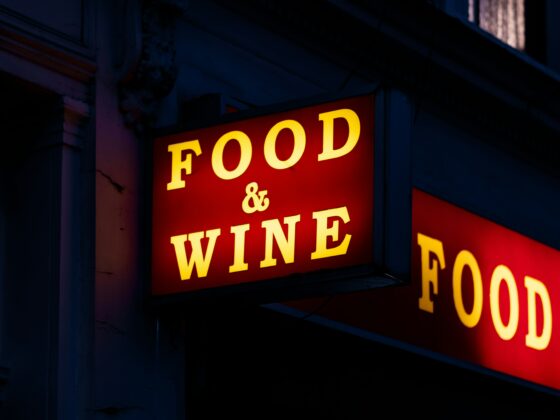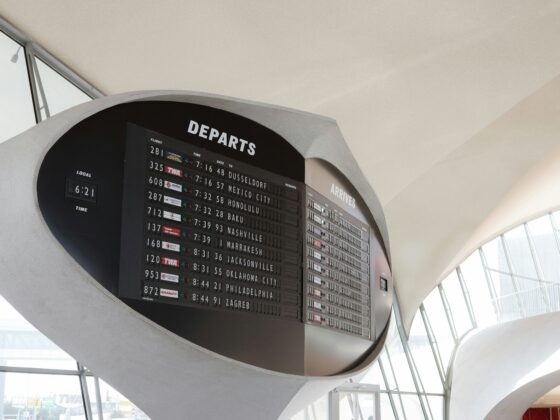
3 major technology trends affecting the food service industry
The good news is that restaurant operators aren’t strangers to digital transformation. Many readily adopted technology tools to keep their businesses afloat during the COVID-19 pandemic.
Initial investments often focused on solving specific challenges that surfaced during the global health crisis, such as implementing online ordering systems to handle a spike in takeout or using QR code menus to enable contactless dining. These digital investments underscored the need for restaurants to adopt technology that integrates and augments their physical environments.
In the years since the pandemic, smart restaurateurs have continued to embrace digital solutions to meet new consumer expectations. However, a growing percentage of today’s digital tools and technology advancements are driving more holistic transformations across operations, not one-off needs.
Let’s take a look at three key technology trends reshaping the food service industry in the year ahead.
- The rise of robotics in kitchens
- The use of advanced data analytics in decision-making
- A shift from front-of-house to back-office technology priorities
As the innovations from Chipotle, Sweetgreen, and my own operating experience underscore, robotics are increasingly ingrained in restaurant operations. This trend will only accelerate as more advanced hardware solutions enable restaurants to streamline repetitive tasks, ensure consistency, and enhance efficiency.
Not all restaurants will roll out a fully automated kitchen right away (if ever). Rather than replacing human jobs, robots will support them, as more restaurants adopt automation or robotic technology to handle simple tasks and ease labor-intensive duties. These smaller-scale investments will lead to more widespread deployments over time.
The AI revolution has significant ramifications for the restaurant industry. In particular, AI, machine learning, and advanced data analytics now empower restaurant operators to make more informed decisions about operational efficiency, growth strategies, and profitability.
Integrated data analytics enable restaurants to leverage the wealth of data gathered from sales, foot traffic, ingredient usage, and numerous other sources. Increasingly, restaurants can turn to technology to share, integrate, and analyze these data sources across platforms.
Over the past several years, restaurants have focused on front-of-house technologies like mobile ordering, pay-at-table systems, and support for third-party delivery. These innovations have reshaped customer expectations for dining.
New technology developments will continue to improve the front-of-house but at a much slower pace than in previous years. Many restaurants are shifting their focus to back-of-house solutions aimed at improving everything from inventory management and ingredient usage to invoice processing and budget tracking.
In the wake of ongoing labor shortages, rising costs, and other economic pressures, these back-office innovations will prove crucial to improve operational efficiency and ensure profitability in the year ahead.
Staying ahead of rapid technology changes
As restaurants respond to emerging technology trends, long-term success hinges on making smart technology investments that reinforce your commitment to exceptional guest experience.
The following strategies can help you effectively navigate the year ahead — and all of the technology transformations that will come with it.
- Build cohesive and integrated systems.
- Prioritize flexible solutions over catch-all fixes
- Connect technology initiatives back to your guest experience.
Restaurants can no longer rely on patchwork technologies and disconnected solutions to run the business. As AI, machine learning, and advanced data analytics become increasingly embedded throughout operations and critical for growth, you require cohesive and integrated systems capable of unifying technology under a single framework.
Start by choosing systems that easily connect through APIs and tools that facilitate data sharing across platforms. From there, continue to build interconnected solutions that not only streamline operations but offer a unified view of your business and empower you to make informed, data-driven decisions.
Many tech providers offer comprehensive, all-in-one solutions that promise to revolutionize your entire operations. It’s important to evaluate these tools carefully and assess if they can actually meet your restaurant’s specific needs and help you adapt and scale over time.
Flexible digital tools with a more specific impact enable you to refine processes, resolve challenges, and respond to changing conditions without the need for frequent, costly overhauls. In particular, look for solutions that are compatible with other platforms, allowing you to build upon your tech stack and scale your digital initiatives alongside your business.
Unlike pure services businesses where digital transformation can happen quickly and all at once, restaurants will remain a more physical business where process improvements are difficult to introduce. As such, flexibility is critical to ensure a tech stack that you can modify over time.
Avoid technology initiatives that stem from chasing the latest digital fad or pursuing innovation for the sake of innovation alone. These types of fleeting investments rarely generate lasting value. Rather, your end goal for any digital solution should be to enhance the customer experience.
Even back-of-house innovations that improve internal processes should ultimately lead to a customer-first philosophy. For instance, investing in a new SaaS platform doesn’t just streamline operations, it also frees up resources to provide exceptional customer service and personalized experiences to guests.
Aligning all technology initiatives around a shared CX goal ensures technology investments will add true value that supports your brand promise and your bottom line.









